
小学五年级英语语法汇总,英语词类句型用法详解
一、词类:
1、名词
⑴ 不可数名词都默认为单数,所以总是用is
⑵ 名词复数如何加后缀:
|
各种不同情况 |
变化方法 |
例词 |
|
一般情况 |
直接加-s |
book-books bag-bags cat-cats bed-beds |
|
以s. x. sh. ch结尾 |
加-es |
bus-buses box-boxes brush-brushes watch-watches peach—peaches glass--glasses |
|
以“辅音字母+y”结尾 |
变y为i, 再加-es |
family-families study--studies |
|
以“f或fe”结尾 |
变f或fe为v,再加-es |
knife-knives |
|
不规则名词复数 |
man-men woman-women policeman-policemen policewoman-policewomen mouse-mice foot-feet child-children fish-fish Chinese-Chinese |
|
人称代词和物主代词 人称代词有主格和宾格之分。一般动词前用主格,动词后用宾格。
|
人称代词 |
物主代词 |
|||||
|
单数 |
复数 |
单数 |
复数 |
|||
|
主格 |
宾格 |
主格 |
宾格 |
形容词性 |
形容词性 |
|
|
第一人称 |
I(我) |
me |
we(我们) |
us |
my(我的) |
our(我们的) |
|
第二人称 |
you(你) |
you |
you(你们) |
you |
your(你的) |
your(你们的) |
|
第三人称 |
he(他) |
him |
they (他/她/它们) |
them |
his(他的) |
their (他/她/它们的) |
|
she(她) |
her |
her(她的) |
||||
|
it(它) |
it |
it(它的) |
||||
3、指示代词
|
指近处 |
指远处 |
|
|
单数 |
this (这个) |
that (那个) |
|
复数 |
these(这些) |
those(那些) |
4、冠词有a、an、the。
a和an的区别:an用于元音音素(一般就是元音字母a、e、i、o、u)前,a用于辅音音素前。
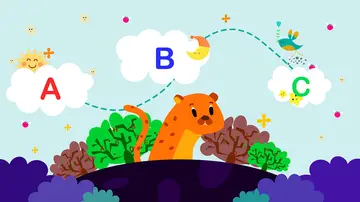
二、否定句:
be动词(am、is、are)+not、
情态动词can+ not、
助动词(do、does) + not
如何将一个肯定的陈述句改为否定句:
1、看句中有无be动词,如有,直接在be动词后+ not。
2、看句中有无情态动词,如有,直接在情态动词后+ not。
3、如上述二者都没有,就应用助动词+ not。分四个步骤:
(1)肯定陈述句中本来是没有助动词的,要加上去,位置在主语(某人或某物)后,动词前。
(2)确定助动词用do、does,根据人称(不是三单)或句中动词,动词是原形的助动词就用do,人称(动词)是第三人称单数的助动词就用does,
(3)在助动词后加not。
(4)原句中动词假如发生变化就要恢复成原形。
强调一点,有some的要考虑是否要用any ---would like用some。
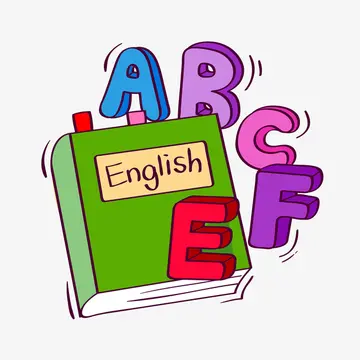
三、一般疑问句。
如何将一个肯定的陈述句改为一般疑问句:
1、看句中有无be动词,如有,把be动词提到句首即可。
2、看句中有无情态动词,如有,把情态动词提到句首即可。
3、如上述二者都没有,就应把助动提到句首。分四个步骤:
(1)肯定陈述句中本来是没有助动词的,要加上去,位置在主语(某人或某物)后,动词前。
(2)确定助动词用do、does,根据人称(不是三单)或句中动词,动词是原形的助动词就用do,人称(动词)是第三人称单数的助动词就用does,
(3)把助动词后提到句首。
(4)原句中动词假如发生变化就要恢复成原形。
强调一点,有some的要考虑是否要用any ---would like委婉语气。
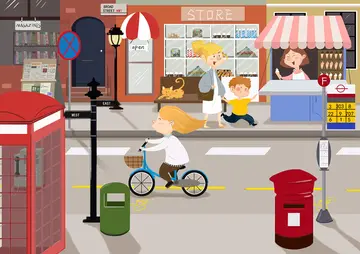
四、特殊疑问句。
表示疑问,有疑问词(在开头),回答有很多种可能。
常用疑问词:
|
疑问词 |
意思 |
用法 |
|
What time |
什么时间 |
问具体时间,如几点钟 |
|
Who |
谁 |
问人 |
|
Whose |
谁的 |
问主人 |
|
Where |
在哪里 |
问地点 |
|
What |
什么 |
问东西、事物 |
|
What colour |
什么颜色 |
问颜色 |
|
How old |
多大年纪 |
问年纪 |
|
How many |
多少数量(可数名词) |
问数量 |
|
How much |
多少钱;多少数量(不可数名词) |
问多少钱或数量(不可数) |
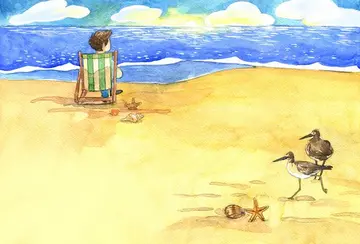
五、时态
1、一般现在时
(1)一般现在时中的be动词:
一般用原形:am is are
am用于第一人称单数(I);
is用于第三人称单数(he she it和其他人名或称谓,如:Ben his sister等);
are用于第二人称单数(you)和所有复数(包括第一人称复数we、第二人称复数you;第三人称复数they和其他复数,如the children 、 his parents等)。
(2)一般现在时中的动词:
第一种情况:主语是第三人称单数(he she it 和其他,如Helen 、her cousin 等),动词后一般加s或es。
第二种情况:主语不是第三人称单数,动词都用原形。
(4)一般现在时判断依据(如何判断一个句子是一般现在时):
△be动词是am、is、are △动词用原形或加s、es
△没有时间状语或有usually、often、everyday、sometimes等不是具体的时间
2、现在进行时
(1)构成形式:Be动词+动词的ing形式
这里强调一点,两者缺少其中任何一种都不可以构成现在进行时。
(2)现在进行时表示动作正在进行或事情正在发生。
(3)有用的依据:一个句子中既有be动词,又有动词,且动词加了ing ←→ 该句是现在进行时
(4)句中往往有now、look、listen等词。
动词现在分词的变化见下表:
|
词尾情况 |
变化方式 |
例词 |
|
一般情况 |
加—ing |
play玩—playing do做—doing go去—going jump跳—jumping sing唱—singing ski滑雪—skiing see看见--seeing |
|
以不发音的e结尾 |
去e加—ing |
make做—making take拿到—taking like喜欢—liking come来—coming write写—writing dance跳舞—dancing have有—having close关—closing |
|
以重读闭音节结尾的动词,中间只有一个元音字母,词尾只有一个辅音字母 |
双写最后一个辅音字母再加—ing |
swim游泳—swimming sit坐—sitting run跑—running get得到—getting put放—putting begin开始—beginning jog慢跑—jogging |
同音词: too---two----to buy---by I---eye four----for
there----their right----write sun----son no----know
here---hear who’s----whose
近义词: many----a lot of / lots of large----big desk----table
photo---picture lamp----light like----love
反义词或对应词:old----new go----come big----small
open----close black----white here----there
完整形式:let’s=let us(让我们) I’d=I would can’t=can not I’m=I am
词性变换:one(序数词) first monkey(复数)monkeys skiing(原形)ski
is(复数)are families(单数)family make(现在分词)making
we are(缩略形式)we’re do(第三人称单数)does have(第三人称单数)has
photo(复数)photos fat(反义词)thin
|
做题目时一定要记住: |
|
can+动词原形 like+动词ing like+名词复数 play+足球类 play the +乐器类 how many +名词复数 would like +to+动词原形 let’s+动词原形现在进行时:be(am,is,are)+动词ing 动词第三人称单数形式 |
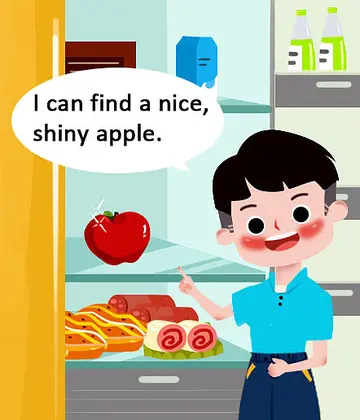
六、选择和用所给词适当形式填空
- like + 动名词 如:like swimming
like + 名词的复数 如:like masks
- go + 动名词 如:go climbing
- How many + 名词复数 如: how many watches
- different + 名词复数, 前面不要加the, 如:different countries
- same 前加the , 后面一般跟单数,如: the same hobby
- 序数词前一定加the ,如:the first day, the second son
- 在几点用 at, 如 at 7 o’clock ,
在某一天或某一天的具体时间段用on ,如:on Sunday, on Sunday morning,
直接在早上、下午或晚上用in,如:in the morning
- 动词后代词用宾格(动宾)如:join me
10.介词后代词用宾格(介宾)如:with him , to her, for them, about it
11.want to +动词原型 , would like to + 动原 , sorry to + 动原 ,forget to + 动原,
it’s time to + 动原,
12.情态动词can后面加动原,let’s 后加动原
13.祈使句中动词用原形(如Doyour homework, please.),
否定句在句首加Don’t (如Don’t doyour homework, please)
14.助动词(do does don’t doesn’t)后动词用原形
15.形容词加名词(形名) 如: a beautiful girl
16.动词加副词(动副) 如: dance beautifully
17.some 用于肯定句,any 用于否定句
18.There be 结构就近原则 如:There is a teacher and some students in the classroom.
19.不可数名词:water coffee tea milk juice bread rice food fruit paper chocolate exercise fish
20.乐器前加the, 球类前不加the, (play the 乐器,play 球类)如:play the piano, play football
21. Who 当作特殊的第三人称单数(Who singswell? )
22. 一般现在时关键词: often usually always sometimes on Sundays every……
(主语为第三人称单数,动词加s或es, 其他时候动词用原型)
现在进行时关键词:look listen now (be动词,动词ing缺一不可)
23. 冠词:a, an, the
①元音音素前面用an, 辅音音素前用a
a coat, an orange/ English /interesting coat… (a ,e , i, o, u)
②第一次提到某人或某物用a/an,下文再提及用the
There is _______ monky. _____monkey is eating bananas.
③a, an, the不和my/your/his/her/their/ our/its一起用, 不能和that, this, these, those一起用
my book this crayon
24. 人称代词:很多人称并列做主语时候,I最后,第二第三人称先说
You, she and I are going to see a film’
25. busy/ free/ absent / late等形容词用在句子中必须和be动词一起
Is the busy? I am absent. Don’t be late
26. from要和be动词一起用。He is from China? Arethey from the same city?
27. and前后动作一致。She often goesfishing and takesphotos. Let’s goand havesome chicken.
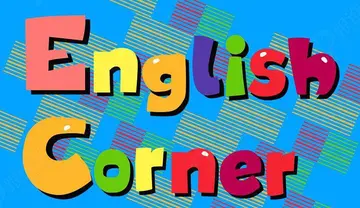
- 上一篇:有质感的成长语录英汉互译,英语作文高级句子素材
- 下一篇:没有了



 微信收款码
微信收款码 支付宝收款码
支付宝收款码